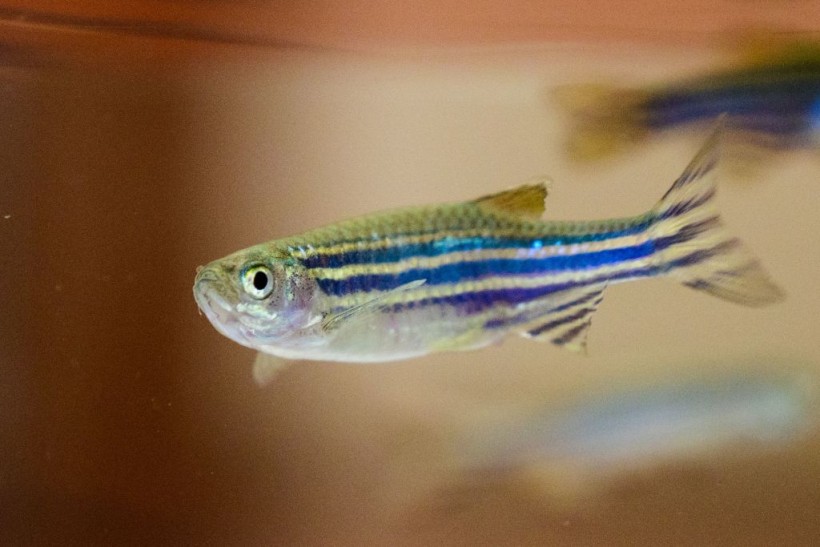Newly published research suggests that the first-ever most comprehensive atlas on the genetic data of zebrafish will greatly benefit medical and life science research. The atlas will aid researchers in better understanding and studying conditions from various types of cancer, heart diseases, and neurodegeneration. It can also help researchers to replace mammal models in future studies.
Largest Zebrafish Genetic Atlas: A Breakthrough

A zebrafish, which shares a similar genetic structure to humans, is seen in a fish bowl during a press conference by Kelvin Leung at the Baptist University in Hong Kong on October 4, 2018, on his research which found that UV filters commonly used in sunscreen are polluting surrounding waters and could endanger human health. - New research in Hong Kong has found that UV filters commonly used in sunscreen are polluting surrounding waters and could endanger human health, one of the city's leading universities said on October 4
A nationwide collaboration of 27 laboratories, the BANIO-CODE, partnered to catalog published open-access datasets and newly produced data. The team's effort resulted in 140,000 regions of DNA involved in the regulation of gene expression in zebrafish.
The study published in Nature Genetics, titled "Multiomic atlas with functional stratification and developmental dynamics of zebrafish cis-regulatory elements," analyzed zebrafish because they were the second most widely used animal model for medical and life science research. The team drew on 1,802 samples with millions of data points, providing the broadest picture of DNA regions for transgenic breeding and genetic research on development and diseases.
The paper details DNA elements involved in various embryonic stages of development and improvements to an understanding of the genetic equivalences between mice and zebrafish.
Leading the consortium and a Professor of Developmental Genetics at the University of Birmingham, Ferenc Mueller, explains that the cataloging of the zebrafish's genetic information is a breakthrough that could corroborate some of the most exciting life sciences medical developments for the near future.
He adds that Professor Boris Lenhard, a study from the Imperial College of London, and Professor Carsten Daub from Karolinska Institutet have provided valuable aid in the consortium, especially in coordinating more than 50 researchers across the globe. The resulting atlas is a testament to how a bottom-up initiative for coordination across borders can achieve impactful and beneficial for the research community. The DANIO-CODE creates the catalog itself is open access to secure that researchers can readily utilize the genetic information for studies to come, reports PhysOrg.
ALSO READ: How Does 'Zombie Cells' Form? New Molecular Process Shows It For The First Time
Understanding Zebrafish
Danio rerio, or zebrafish, have been used in research since the 1960s. These small fish have become increasingly vital in scientific research in recent years. Zebrafish, according to YourGenome, is a tropical fish native to southeast Asia, growing to roughly 2.5cm to 4 cm long. In its larvae stage, the zebrafish is transparent; when it matures to adulthood, it develops its characteristic stripes running along the length of its body and looks blue in color.
Males of the species appear slender and torpedo-shaped with a pink or yellow tinge, while females tend to be less pink and fatter than their male counterparts due to the eggs they carry.
Zebrafish are ideal model organisms for studying the cellular and molecular mechanisms underlying regeneration and heart formation. Since the species has a closed cardiovascular system and cardiac cycle, it is highly similar to human cardiovascular physiology. These fish have also been used in past studies to help researchers unlock a variety of biological processes behind muscular dystrophy, cancer, and other diseases.
RELATED ARTICLE: New Species of Great Water Lily Discovered, Hid in Plain Sight for More Than 170 Years
Check out more news and information on Biology in Science Times.




![Aspirin Supports Immune System in Detecting and Targeting Cancer [Study]](https://1721181113.rsc.cdn77.org/data/thumbs/full/53271/89/56/50/40/aspirin-supports-immune-system-in-detecting-and-targeting-cancer-study.jpg)









